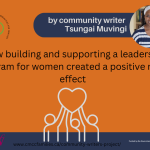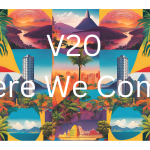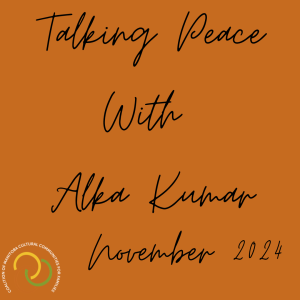
"The best and most beautiful things in the world cannot be seen or even touched - they must be felt with the heart." -Helen Keller, American author, disability rights advocate, political activist and lecturer.
Peace is something that is more than seen and touched. It must be felt.
Hugh Elliott Hill recently shared with me, “I now understand a saying my dad once told me at a time when I was making bad life decisions and continually moving from place to place. During one of our talks, he said that whatever I was running from wasn’t because of my surroundings. He said that no matter the situation, ‘Wherever you run to, there you are, problems and all.’”
In essence, peace starts from within.
Meet Hugh Elliot Hill, Son of Wayne Hill of the Six Nations of the Grand River and Judy Hill (Cooke) of Waywayseecappo First Nation. His father is Mohawk from Ontario, and his mother is Ojibwe from Manitoba. He is registered in Waywayseecappo, Manitoba. He met his partner nearly 25 years ago, and they have raised 4 children, Emilee, 23, Jack, 19, and twins, Cera and Michael, 16. They are all from the Sioux Valley Dakota Nation.
Hugh was born in Brandon, Manitoba, and is 1 of 6 siblings.
What is most notable and inspiring about Hugh is where he draws peace from – experiences in his life that have included practice and involvement in indigenous ceremonies and beliefs, the relationship with his wife, the birth of his children, overcoming an addiction to alcohol, his diagnosis and subsequent remission of chronic myeloid leukaemia, his mother’s diagnosis and ongoing trials of early onset dementia and the recent death of his father after approximately 6 years as his primary support and caregiver.
When I asked Hugh, what peace means to him, this was his response:
“To me, peace can mean many things. It can be as simple as a quiet house and a good cup of coffee in the morning or enjoying music while you go about the day.
The most important meaning to me and the first thought I had when I was asked this question is inner peace. Without a certain calm or peaceful place inside of you to think, reflect, or feel emotions, there will always be a kind of unhappiness or anxiousness that can affect your health or wellbeing.
I’ve personally struggled with my own inner peace and have realized that without some kind of higher power or sense of cultural identity, some kind of positive way point, my life was terribly insufferable and difficult compared to today. When I think back to how I lived and how my life is now, I can say that dealing with my wellbeing first has led to a more positive outlook and outcome on how I live today.
The amount of peaceful moments I can allow myself has gone from short-lived, random realizations to an almost effortless ability to make room for reflection and clearer decision-making despite whatever life presents me with.”
When asked how he thinks there can be peace, Hugh stated:
“I think that if we all actually reflected on what the basic needs for human life are, we’d be closer to what the definition of universal peace can be.
We all need compassion, empathy, love, respect, understanding, and purpose. Any of these things can be the lifting point to the others. We need a sense of what our histories are, good or bad, and a positive way of communicating and addressing each other on how we can help in achieving these universal needs.
There has to be a balance of physical, mental, and emotional needs. If there is a balance in these tenets of positive moral, philosophical, and spiritual beliefs, the world can be a better place.”
When I asked Hugh to give advice to anyone seeking peace, this is what he had to share:
“The only advice I can give anyone seeking any kind of peace would be to find it within themselves. As soon as you start integrating a positive way of living, it can be contagious. A starting point would be to practice self-care and do no harm. It sounds too simple to have any effect, but it can change the outlook you have on life when you make the effort to change or to maintain the positive in your life.”
Peace is not limited to one facet. There is personal as shared above from Hugh’s perspective to community as shared below through the lens of Dr. Robert Chrismas, a retired police officer with over forty years of public safety experience, with expertise in collaborative community engagement, conflict resolution, a doctorate in Peace and Conflict Studies, a master’s in public administration and has written extensively on topics including sex trafficking and reconciliation. Dr. Chrismas also writes fiction novels that address social issues.
For five out of thirteen years in his police career, Bob was engaged in community relations including through the Chief’s office.
Bob’s journey in life is inspiring, from quitting school at the age of 16 to join the workforce, to finishing high school while working and later gaining his doctorate. He is also father to four children, Crystal, Chelsea, Brandi and Bobby.
He was recently charged with leading Winnipeg’s new community safety team initiative, a huge undertaking focused on interrupting social issues in the city with some of the safety challenges starting with Winnipeg Transit.
His dream and vision, which is becoming realized through his current role is to address root causes of community issues, to be more trauma informed, de-escalation based and compassion-based when dealing with people and improving safety. He draws peace from collaboration in the community and advocating for social justice concerns.
When I asked Bob, what peace means to him, this is what he had to say:
“The ability for people to have the opportunity to be happy, to seek a fulfilling and well-supported life including education, employment, housing, food security, basically good standard of living for people and lack of violent conflict.”
When asked what some of the efforts required to realize peace from this perspective are, Bob responded:
“It requires a more long-term approach to dealing with the root causes of conflict and violence. Crime prevention through social development will go much further than a reaction-based approach which doesn’t work. Something has to be done about social conditions – things like addictions and raising people well. Things that have been talked about for decades with the Indigenous communities.”
When I asked Bob what everyone in the community can be doing to contribute to peacebuilding, he shared:
“People need to show up, take responsibility and not deflect blame to others. I learned especially through my work to combat sex trafficking that too many people point to others. People in one area of the city may think that issues happening in another part of community aren’t their responsibility; however, it is everyone’s responsibility.
There are a lot of people with a lot of heart and working hard to try and help vulnerable people in various ways. These resources could use a lot more collaboration and coordination to make a bigger impact. It’s everyone’s responsibility and everyone can do something.
On an agency level, they need to work together and take responsibility. On an individual level, everyone can do something, even if it’s teaching a young child to stand up for another child being bullied. It can also look like someone stopping to check on the well-being of someone laying on the street instead of just stepping over them.”
The various aspects of peace are interconnected – starting with inner peace and flowing into community peace. When individuals have peace, they can contribute to peace in their local communities. The perspectives and expertise shared by Hugh and Bob give examples of how and starting points, especially in the diverse communities we live in. As the Dalai Lama once said:
“World peace must develop from inner peace. Peace is not just mere absence of violence. Peace is, I think, the manifestation of human compassion.” -Dalai Lama

This article was written by community writer Tsungai Muvingi as part of our J.E.D.I. Initiative – Community Writers Project. All thoughts and opinions expressed are Tsungai’s own. You can learn more about Tsungai on our team page here.
To learn more about our Building Bridge project, you can click: Here

 Previous Post
Previous Post Next Post
Next Post
